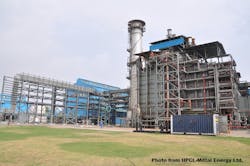HMEL advances Guru Gobind Singh refinery petchem project
HPCL-Mittal Energy Ltd. (HMEL) has let two contracts to a consortium of Maire Tecnimont SPA subsidiaries to provide engineering, procurement, construction, and commissioning services for implementation of two petrochemical units to be located adjacent to HMEL’s 9 million-tonne/year Guru Gobind Singh refinery at Village Phullokhari, about 35 km from Bathinda in India’s northern state of Punjab.
As part of the lump-sum contracts, Tecnimont SPA and Tecnimont Private Ltd. will deliver EPCC services for a 450,000-tpy high-density polyethylene (HDPE) and a 500,000-tpy polypropylene (PP) unit at the site, Maire Tecnimont said.
Valued at about $225 million, the two contracts include EPCC services up to the performance guarantees test run of the monomer purification sections and the polymerization areas, the service provider said.
The consortium’s scope of work on the project will last 25 months to mechanical completion.
The HDPE and PP units come as part of HMEL’s proposal to build an integrated petrochemical manufacturing site (Guru Gobind Singh Polymer Additions Complex) within Guru Gobind Singh’s existing refinery complex to help maximize returns as well as expand its product portfolio (OGJ Online, Oct. 31, 2017).
Alongside the HDPE and PP units, the new complex will feature a mixed-feed 1.2 million-tpy ethylene plant—expandable to 1.5 million tpy—which will include the steam cracker, refinery off-gas treatment unit, C4 hydrogenation unit, pyrolysis gasoline hydrogenation unit, and benzene extraction unit.
The petrochemical addition also will include a 55,000-tpy butene-1 unit and two 400,000-tpy linear low-density/HDPE swing units, according to documents filed with India’s Ministry of Environment, Forest & Climate Change (EFCC).
EFCC documents also show the project will involve the addition of captive utility generation installations (recirculating cooling-water system, compressed air system, inert gas system, fuel gas system, flare system, condensate polishing unit, and demineralization water treatment system) as well as offsite-storage facilities for the following:
• Liquid on and off-spec ethylene.
• Liquid on and off-spec propylene.
• Hydrogenated C4 mix and off-spec C4.
• Raw pyrolysis gasoline.
• C6 cut.
• Butene-1.
• Benzene.
• Pyrolysis fuel oil and carbon-black feedstock.
• Hydrogenated pyrolysis gasoline.
• C9+ cut.
• C6+ oligomer.
• Slop.
• Hexane.
• Pentane.
• Hexene-1.
• Bagging.
While the refinery will supply its own streams of refinery fuel gas, LPG, heavy naphtha, and light kerosine as feedstock for the new petrochemical complex, HMEL will outsource supplies of hexane, hexene-1, and pentane to feed the complex’s polymer units.
Refinery expansion
The proposed petrochemical expansion comes alongside HMEL’s execution of its 11 billion-rupee upgrading project to meet Bharat Stage (BS) 6-grade (equivalent to Euro 6-quality) fuel specifications at the Guru Gobind Singh refinery as part of the public-private partnership’s broader plans to expand the manufacturing site’s crude processing capacity to 11.25 million tpy from its current 9 million-tpy capacity (OGJ Online, June 26, 2017).
Approved for environmental clearance by EFCC in June 2015, the capacity expansion, now under way, includes a combination of new units as well as debottlenecking work at existing units to improve throughput rates.
The BS 6-grade fuel specifications project is scheduled to be commissioned by September 2019, according to HMEL, a joint venture of state-owned Hindustan Petroleum Corp. Ltd. and privately held Mittal Energy Investment Pte. Ltd., Singapore.
Contact Robert Brelsford at [email protected].

